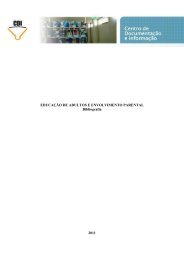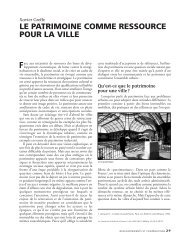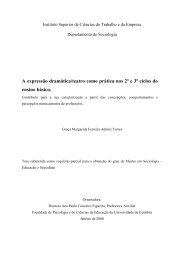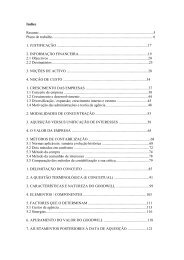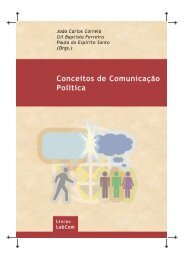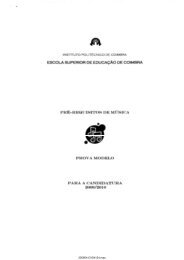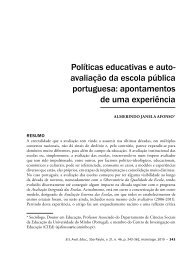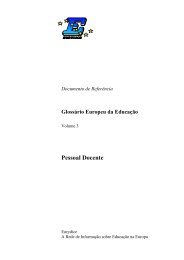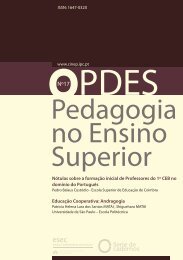BALANCING FAMILY AND WORK ROLES : EXPECTATIONS OF ...
BALANCING FAMILY AND WORK ROLES : EXPECTATIONS OF ...
BALANCING FAMILY AND WORK ROLES : EXPECTATIONS OF ...
Create successful ePaper yourself
Turn your PDF publications into a flip-book with our unique Google optimized e-Paper software.
autonomy is the ability to take care of one’s own needs without the help of parents.Freedom from the need for acceptance and emotional support from parents is the maincharacteristic of emotional autonomy. Finally, freedom from excessive guilt, anxiety andanger toward conflicts with parents defines conflictual autonomy. The Portuguese version ofthe inventory (Almeida, Dias & Fontaine, 1996) confirmed the four initial dimensions towardeach parent, which presented good internal reliability (>.80). (Almeida, Dias & Fontaine,1996 ; Fontaine, 1990) (Table 1).3.1.2 Thinking Style Inventory (TSI).The Thinking Style Inventory (TSI) designed by Sternberg and Wagner (Sternberg,1997) was based upon the Self-Government Theory (Sternberg, 1994, 1997). According tothis theory, thinking styles includes five dimensions : functions (executive, judicial andlegislative), leanings (conservative and progressive), scope (internal and external), levels(local and global) and forms (monarchic, hierarchic, oligarchic and anarchic). For thepurpose of this study, only the latter was observed because it is expected to be closelyassociated with the organization of life goals.Previous factorial analysis has shown that different forms of thinking styles loadeddifferent factors : the oligarchic and the hierarchic styles are clearly differentiated (Table 1).In spite of its validity and reliability, the TSI has never been used other than in thestrictly academic domain, namely in role balancing studies.3.1.3 Work and Family Orientation Questionnaire (W<strong>OF</strong>O).The Work and Family Orientation Questionnaire (W<strong>OF</strong>O) was constructed by Spence& Helmreich (1978) and presents seven scales which assess the commitment to the workrole : orientation toward work, mastery, competition and effort, employment concerns,concern with partner’s career aspirations, and indifference toward peers. It also includes, ina complementary questionnaire, some questions about the relative importance attributed tomarriage/conjugality and employment/work, the ideal number of children, as well as otherquestions concerning educational aspirations.This questionnaire has been used with secondary and college students in severalinvestigations of the prospective balancing of family and work roles, focused on genderdifferences. Strong and positive correlations between masculinity and work, mastery andcompetition have been found (Table 1).3.1.4 Adult Self-Perception Profile (ASPP).The Adult Self-Perception Profile (ASPP) was developed by Messer & Harter (1986) toassess the multidimensional adult’s self-concept. It includes eleven scales that underline thedifferentiation of adult’s perceived sense of competence/adequacy from a developmentalperspective. For this study, five specific domains were assessed : job competence (orfeeling of competence, productivity, pride in one’s work) household management (theperception of capacity to effectively handle and oversee activities within domestic context),nurturance (the perception of ability to care for others), adequate provider (the perception ofability to supply the means of support for oneself and significant others) and intimaterelationships (the capacity to create and maintain close, meaningful interactions with a7 http://aifref.uqam.ca – Actes du VIIIe Congrès de l’AIFREF



